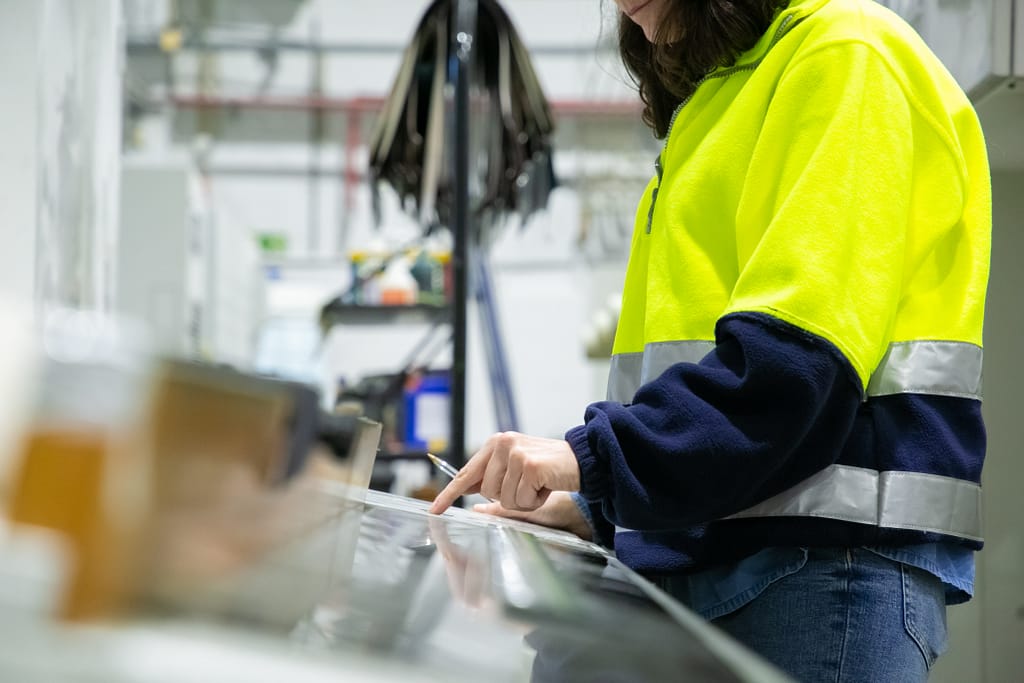Do you have an app for tracking the carbon footprint? You must know the world is waking up to the urgency of climate action – from soaring energy bills to a growing awareness of environmental threats, we’re all looking for ways to live more sustainably. Thankfully, though, technology is here to help. There’s an app for almost everything these days, and that includes keeping track of your environmental impact.
This article dives into the world of carbon footprint tracker apps. We’ll explore what these apps do and why they matter, as well as introduce you to some of the best options available. By the end, you’ll be equipped to choose the perfect app to track your carbon footprint and take action towards a greener future.
To read our complete guide on carbon footprint trackers, click here instead.
What is a carbon footprint?
In simplest terms, a carbon footprint refers to the total amount of greenhouse gas emissions tied to the production of a product or the occurrence of an activity. These emissions mainly stem from four key areas in developed countries: household energy usage, transportation, dietary choices, and consumption of various goods like electronics, clothing, and vehicles.

Every action and product contributes to an individual’s carbon footprint. It encompasses all emissions resulting from purchases, activities, and more.
To illustrate, imagine two individuals: one regularly consumes beef, resulting in a higher carbon footprint in the food category, while the other, a vegan, might have a lower food-related footprint. However, if the vegan commutes in an SUV daily, their overall footprint might exceed that of the beef-eater who bikes to work. Despite this, both could pale in comparison to a businesswoman who frequently flies first-class cross-country.
Why track your carbon footprint?
We’re facing a climate emergency. Everyone – individuals, businesses, and governments – needs to reduce their carbon footprint to avoid catastrophic warming. This is the total amount of greenhouse gas (GHG) emissions associated with your lifestyle or operations.
But how do you know where to start reducing if you don’t understand your impact?
That’s where an app for tracking the carbon footprint comes to the rescue. These tools help you calculate and measure your emissions across four key areas:
- Energy use: This includes electricity, heating, and cooling costs at home or work.
- Transportation: Consider your car usage, public transport choices, and air travel.
- Food: Meat production contributes heavily to emissions. Reducing red meat consumption can make a significant difference.
- Goods and Services: The production and transportation of everything you buy has an environmental cost.
By understanding your personal footprint, you can identify areas for improvement. Maybe it’s cutting back on meat, switching to energy-efficient appliances, or opting for public transport instead of driving. Every little bit counts and that is what makes an app for tracking the carbon footprint so important.
The best app for tracking the carbon footprint of your business: 4 options
- Joro: This app for tracking carbon footprint uses your spending habits to estimate your footprint and help you make more sustainable choices. Joro connects to your bank and uses its “Carbonizer” tool to analyze your purchases.
- Adva: Adva goes beyond tracking by providing daily tasks and challenges to lower your footprint. Complete these tasks and earn rewards like discounts on eco-friendly products.
- MyEarth: Developed by researchers, MyEarth helps you track and reduce your energy consumption at home. This app uses a diary format where you can choose daily activities to cut back on energy use.
- Capture: Capture sets personalized monthly carbon targets based on scientific recommendations. It uses GPS to estimate emissions from your daily travel and allows you to track food-related emissions as well.
No app is as complete as a full hardware solution!
Check this out: Thingfox’s Scope 3 tracker is designed for seamless integration into existing infrastructure, minimizing disruptions to daily operations. This tracker – which comes with fully working software that can be accessed from anywhere in the world – can be easily plugged into a truck’s systems, allowing for hassle-free deployment and immediate data collection on gas consumption and CO2 emissions in real time.
This enables many companies to track their emissions with high precision, ensuring accurate carbon footprint reporting and facilitating timely adjustments to operations if needed.
To learn more about this product, get in touch with our team!

Taking action for a greener future
An app for tracking the carbon footprint is, at the end of the day, a valuable tool in the economic activities of any big business – especially regarding the CSRD (Corporate Sustainability Reporting Directive) requirements starting in 2024, which mandates comprehensive reporting on environmental and social impacts for a wider range of companies. Above all, they need to disclose information on the sustainability impacts of their business and how sustainability issues affect their business.
Read as well: Factory asset tracking – a CSRD guide
That said, the real power lies in using the insights they provide to make changes. Reducing your carbon footprint is a significant step towards mitigating climate change and preserving the planet for future generations. Here are some effective strategies to help minimize your impact on the environment:
Reduce energy consumption
Opt for energy-efficient appliances and lighting in your home. Turn off lights and unplug electronic devices when not in use. Set your thermostat to an energy-saving temperature and consider installing a programmable thermostat to regulate heating and cooling efficiently.
Choose renewable energy
If possible, switch to renewable energy sources such as solar or wind power for your home. Many utility companies offer green energy options that allow you to support renewable energy projects.
Drive less, drive smart
Reduce your carbon emissions by walking, biking, carpooling, or using public transportation whenever possible. When driving, maintain your vehicle properly to ensure it operates efficiently, and consider investing in a fuel-efficient or electric car.
Conserve water
Conserving water not only helps preserve this vital resource but also reduces the energy required to treat and transport water. Fix leaks, take shorter showers, and install water-saving devices such as low-flow faucets and toilets.
Eat sustainably
Choose locally sourced, organic, and seasonal foods to reduce the carbon footprint associated with transportation and production. Incorporate more plant-based meals into your diet, as plant-based foods generally have a lower environmental impact than animal products.
Reduce, reuse, recycle
Practice the three Rs to minimize waste and conserve resources – reduce your consumption of single-use items, reuse products whenever possible, and recycle materials such as paper, plastic, glass, and metal to divert them from landfills.
Support sustainable practices
Patronize businesses that prioritize sustainability and eco-friendly practices. Look for certifications such as Fair Trade, Organic, and Forest Stewardship Council (FSC) when making purchasing decisions.
Plant trees and support conservation
Trees absorb carbon dioxide and provide a vital habitat for wildlife. Participate in tree-planting initiatives in your community or support organizations dedicated to reforestation and conservation efforts.
Practice energy-efficient habits
Turn off lights when leaving a room, use natural light during the day, and line dry clothes instead of using a dryer whenever possible. Small changes in daily habits can add up to significant energy savings over time.
Educate and advocate
Spread awareness about the importance of reducing carbon emissions and encourage others to take action; you must always support policies and initiatives aimed at combating climate change on local, national, and global levels.
By implementing these strategies in your daily life, you can play a vital role in reducing your carbon footprint and contributing to a more sustainable future for our planet!

App for tracking the carbon footprint: the bottom line
By tracking and reducing your carbon footprint, you’re not only contributing to a healthier planet but also complying with the CSRD requirements, which demands significant emphasis on robust greenhouse gas emissions reporting for companies operating within the EU, or with qualifying EU subsidiaries. Carbon footprint tracker apps can help your business in this mission.
Of course, this is a future we here at Datanet IoT are ready to embrace with our environmental tracking solutions and devices. So if you want to know more about our work and also prepare your company for the future, you can contact us anytime to check out everything we can offer you!
Don’t miss: Tracking and reporting Scope 3 data – 2024 guide






